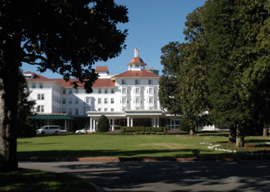
June 11, 2014

Pinehurst Golf Club
Source: Shutterstock
It was around 1840 that St. Andrews pro Allan Robertson became the first golf course architect. Assisted by his apprentice, the then-young Old Tom Morris, Robertson began to intentionally reshape St. Andrews into the course that hosts the British Open still today.
For Scottish-Americans such as Charles Blair Macdonald, designer of this country’s first great course, the National Golf Links of America, the game was a sort of ethnic pride parade. (Macdonald entitled his autobiography Scotland’s Gift: Golf.) For other Americans, it was a mysterious but hopeful opportunity for a little of that Scottish moneymaking mojo to rub off on them.
In the 21st century, however, the demographic, economic, and cultural tides have turned against the old game. The country has so many more golf courses than it needs, that whereas 15 years ago scores of courses competed to be honored as one of the ten best new courses of the year, today golf magazines annually scramble to find ten new courses.
Recently, golf’s leaders seem to have largely given up trying to attract the attention of the masses of 21st century Kardashian-Americans. The U.S. Open tournament, for example, has become an increasingly exquisite but insular exercise in Protestant pride. Last year the United States Golf Association sacrificed millions in ticket revenue to return its championship for the first time since 1981 to the tiny 126-acre Merion Golf Club on Philadelphia’s Main Line, designed by Hugh Wilson in 1912.
With no demand for new courses, much of the cultural energy in the game is currently devoted to restoring exclusive old golf courses to their eccentric pre-WWII aesthetic glories.
For instance, this week the U.S. Open goes back to the genteel Bostonian old money resort of Pinehurst in North Carolina’s central Sandhills. Pinehurst was the winter home of Donald Ross, the prodigious Scottish golf architect from Dornoch who apprenticed under Old Tom Morris at St. Andrews and went on to design or remodel 413 American courses during the pre-1929 golden age of course building. He tinkered with Pinehurst’s No. 2 course from 1901 until his death in 1948, using it as a laboratory for refinements in golf strategy.
But being exposed to the elements, golf courses inevitably change. They generally are helped along by architects, greenkeepers, and club committeemen to evolve in the directions of the fashions of the time. Thus, after Ross’s death, Pinehurst devolved from an intricate and scraggly-looking version of the Scottish sand dunes where golf emerged over the last half-millennium to a well-watered modernist parkland course like thousands of others across America. No. 2 remained supremely difficult”nobody broke par when the Open visited in 2005 due to the turtle-shaped greens that cause all but the best approaches to slowly trickle into trouble”but Ross wouldn”t have recognized the manicured modern course.
In 2009-10, however, the architectural team of Bill Coore and former tour star Ben Crenshaw ripped up much of the green grass of No. 2, restoring the sandy wastelands full of shaggy weeds alongside the fairways. If it doesn”t rain too much (although the weather forecast suggests it will likely pour), even the fairways will ideally be dry and brownish so that the ball can roll in amusing arcs across the rumpled terrain, just the way Old Tom liked it.
To the small number of golf architecture aficionados, the Pinehurst renovation is galvanizing news. But to an American public more interested in Kim and Kanye’s wedding, however, thrifty-looking Scottish aesthetics will only further alienate the masses from the game of golf.
But the folks who run golf increasingly don”t care. Perhaps that’s for the best for everyone.